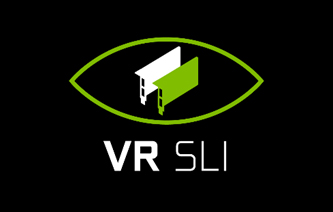AMD speaks on VR.......
AMD's Raja Koduri says that we need 16K at 240Hz for "true immersion" in VR
"AMD's Raja Koduri, the head of the Radeon Technology group, has said for a long time that VR is going to the a driving force behind the advancements in GPU performance for many years to come and that he won't be happy until we can run games a 16K at 240Hz within his lifetime, saying that that would be the point where we will achieve "true immersion that you won't be able to tell apart from the real-world"
When I set the goal, I said, "We need to get here in our lifetime." We can't do that with Moore's law and hardware alone. We have to unleash software on this problem. We've been working with developers on all of these ideas. How can we get 16K by 16K displays refreshing at 240Hz with the picture that you want to draw? Developers want more control, on their side. They want console level GPU access on the PC.

What they've been able to achieve on consoles in the current generation, versus the current high-end PC-The current high-end PC specs are at least four to eight times faster than current consoles. The Fury X is an eight teraflop machine. The PS4 is a two teraflop machine. It's four times more compute in that single Fury. You can build a dual Fury PC. But PC doesn't give you that much better an experience with cutting edge content, because they can extract more performance from a console. They're also investing a lot of IP into that architecture. They're doing some really clever things that are not possible on the PC yet.
Raja Koduri says that we will have to rely on a lot more than Moore's Law in order to get into the "VR Era", where resolutions and refresh rates will be much higher than today's Oculus Rift or HTC Vive headsets. Large and intelligent changes in both GPU and software architectures will be the key to driving up performance while lowering power consumption, which is exactly what the AMD's Radeon Technologies group is working towards."
http://www.overclock3d.net/articles..._need_16k_at_240hz_for_true_immersion_in_vr/1
AMD's Raja Koduri says that we need 16K at 240Hz for "true immersion" in VR
"AMD's Raja Koduri, the head of the Radeon Technology group, has said for a long time that VR is going to the a driving force behind the advancements in GPU performance for many years to come and that he won't be happy until we can run games a 16K at 240Hz within his lifetime, saying that that would be the point where we will achieve "true immersion that you won't be able to tell apart from the real-world"
When I set the goal, I said, "We need to get here in our lifetime." We can't do that with Moore's law and hardware alone. We have to unleash software on this problem. We've been working with developers on all of these ideas. How can we get 16K by 16K displays refreshing at 240Hz with the picture that you want to draw? Developers want more control, on their side. They want console level GPU access on the PC.

What they've been able to achieve on consoles in the current generation, versus the current high-end PC-The current high-end PC specs are at least four to eight times faster than current consoles. The Fury X is an eight teraflop machine. The PS4 is a two teraflop machine. It's four times more compute in that single Fury. You can build a dual Fury PC. But PC doesn't give you that much better an experience with cutting edge content, because they can extract more performance from a console. They're also investing a lot of IP into that architecture. They're doing some really clever things that are not possible on the PC yet.
Raja Koduri says that we will have to rely on a lot more than Moore's Law in order to get into the "VR Era", where resolutions and refresh rates will be much higher than today's Oculus Rift or HTC Vive headsets. Large and intelligent changes in both GPU and software architectures will be the key to driving up performance while lowering power consumption, which is exactly what the AMD's Radeon Technologies group is working towards."
http://www.overclock3d.net/articles..._need_16k_at_240hz_for_true_immersion_in_vr/1


